Scattered leaves and branches of two ‘Silver Cloud’ redbuds (Cercis canadensis ‘Silver Cloud’) and a blackgum (Nyssa sylvatica, below) are covered by the finely spun webs of fall webworms. Every day the webs grow, and the tiny worms devour leaves as they progress through the tree. Commonly available insecticides provide immediate control of the worms, but spraying with a stiff jet of water is often as effective. Instead, I do nothing, or at least, almost nothing.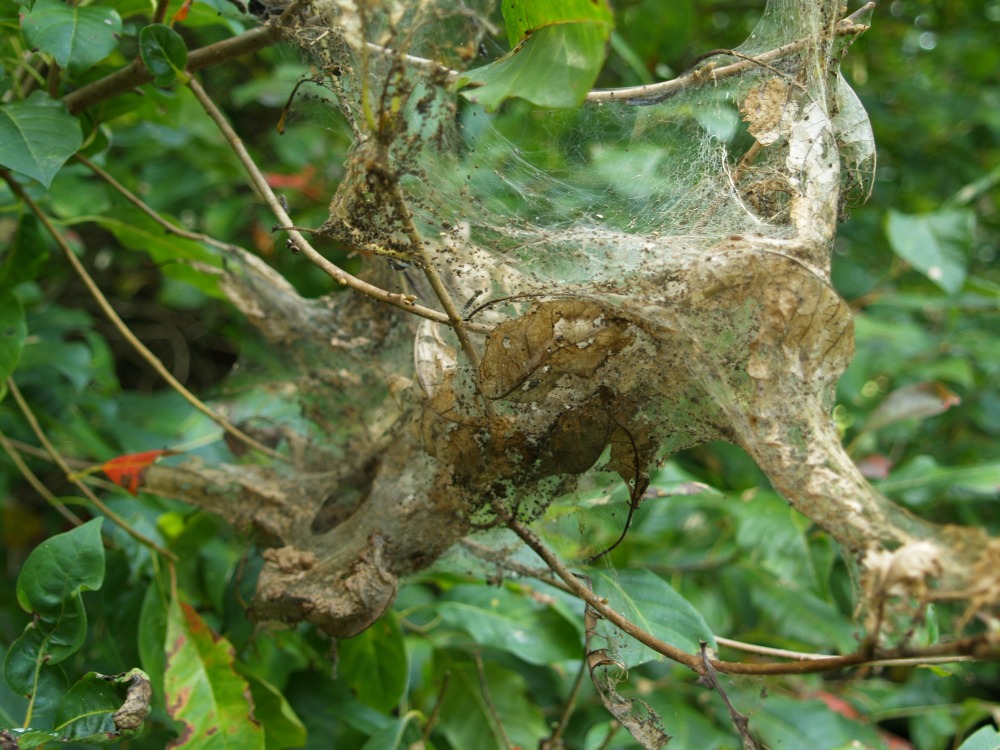
In a one acre garden it should not be surprising that it is inconvenient to drag a hose from one end to the other, and anyway, most of the hoses in my garden dry rot from disuse so they’re of little use once you’ve decided to finally put them to work. So, the jet spray of water to dislodge the webworms is unlikely to be practical.
I try my best to watch out for the bees and butterflies (below) that occupy the garden, so I avoid using pesticides whenever possible. The last whenever was six or seven years ago when I sprayed a ‘Cherry Dazzle’ crapemyrtle as a last resort to prevent aphids from killing it. A few years earlier, a larger ‘Catawba’ crapemyrtle didn’t leaf in the spring after a heavy infestation the previous summer, so I was particularly concerned by the infestation on ‘Cherry Dazzle’. Fortunately, the smaller crapemyrtle was saved, and since then I haven’t seen enough damage from any kind of bug to worry about. I’m still on the lookout for aphids, and I could change my mind, though I’m more likely to do nothing or douse the plant with insecticidal soap rather than a pesticide.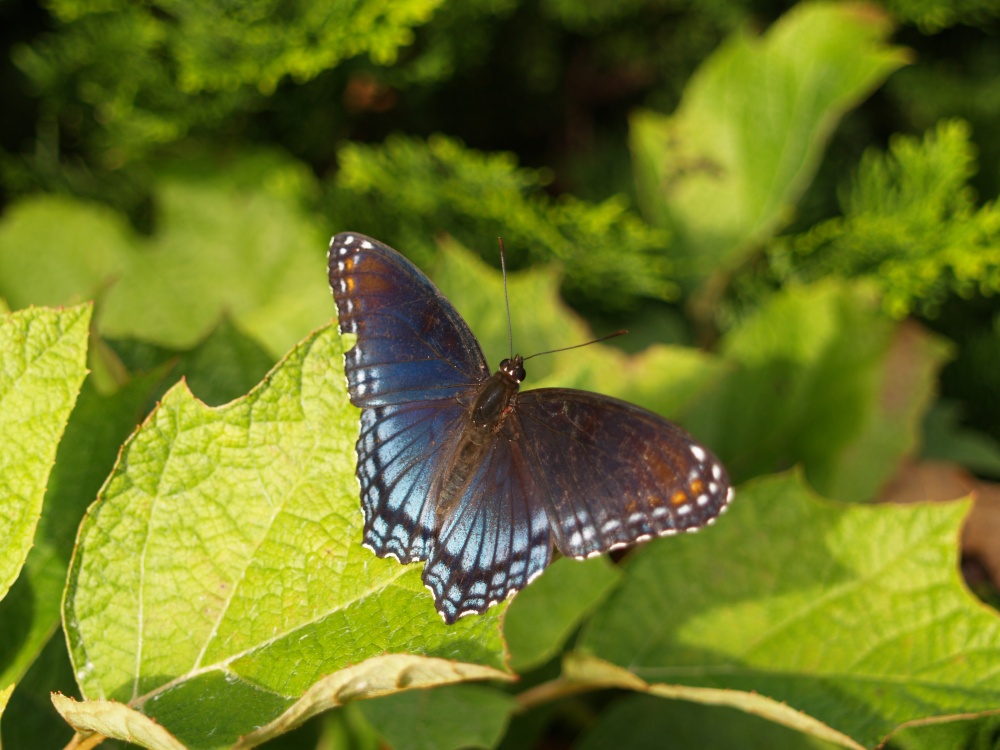
Occasionally, I simply break off a branch tip where webworms have invaded, and sometimes this works, but most often they’ve spread further, and that’s what’s happened this year. Now, a large enough part of the trees is covered by webs so that it’s unsightly, and this will increase before they’re finished. But, cold temperatures and frost are just around the corner, and soon the trees will be defoliating, so what harm is there in letting the webworms finish out the season? Yes, if they’re not killed they’ll be back next year, but they’d probably be back anyway from some other source, so what is accomplished from spraying poisons to kill them?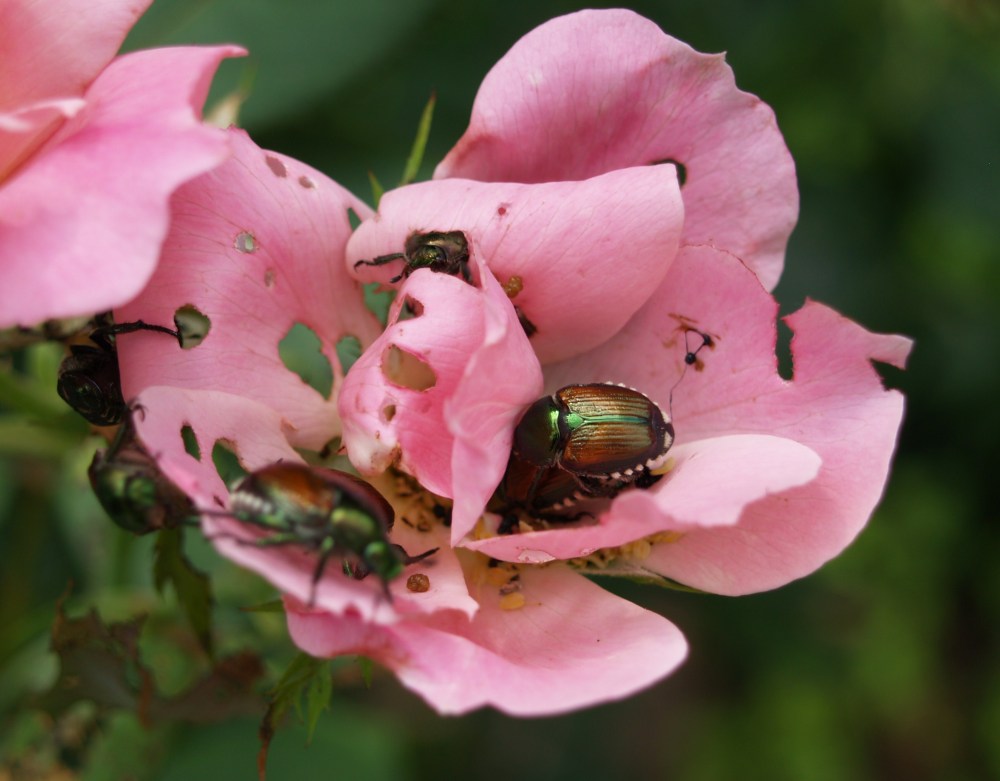
I rarely pay any attention to the Japanese beetles (above) that occupy the garden to varying degrees in mid summer, and inflict minor damage, but in early spring I’m on the watch for tent caterpillars that occasionally crop up. If these are not removed, and the tents are easily dislodged and removed by twirling the web around a loose branch that has fallen, the damage will be evident through spring and summer. There are many other leaf eating caterpillars and bugs out there, and if you’re bothered by these you can spend most of your days plucking, twirling, or spraying to be rid of this or that. But, mostly I’ve found the damage doesn’t amount to much, and if you rid the garden of these nuisances for a while, they’re likely to be back sooner than later, so why bother?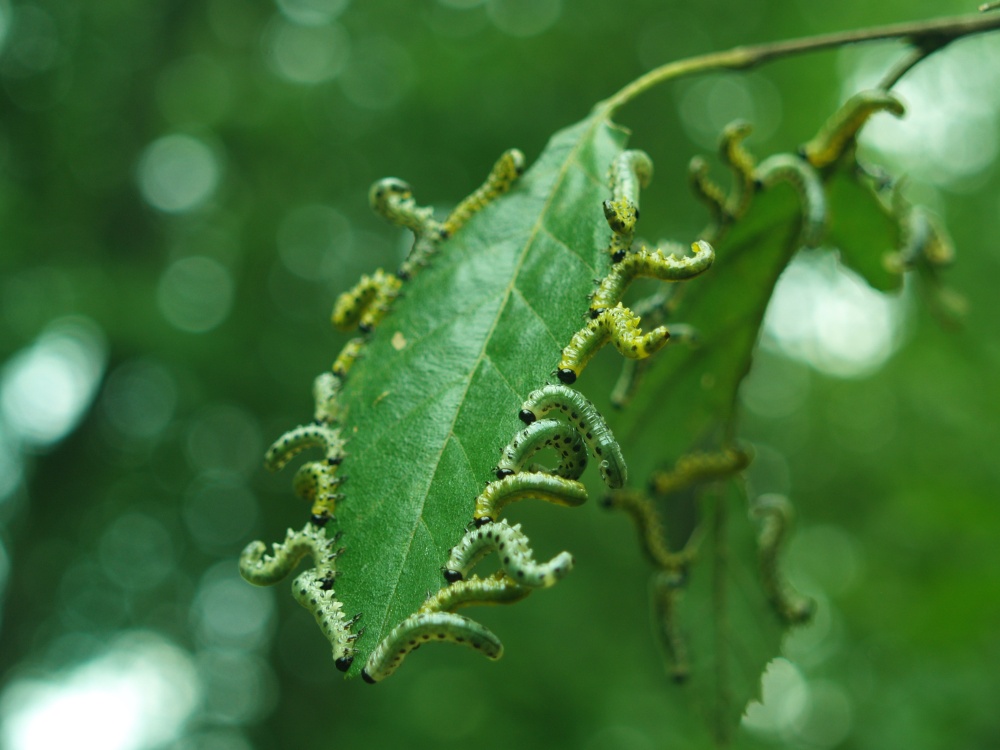
The harm in taking lethal steps to rid the garden of pests is that there are many other beasts that are effected. Today, I’m bothered that there are companies that specialize in killing any and all insects that happen anywhere close to the home. Their primary targets are mosquitoes and ticks, and with the nuisance and threat of Lyme disease this is an easy sell to many homeowners. The companies are also proud to claim that they eliminate ants and bees as well, with their websites proclaiming the evils of these valued pollinators. Along with pests, insecticide treatments also eliminate worms, so the reasons for avoiding these treatments should be obvious.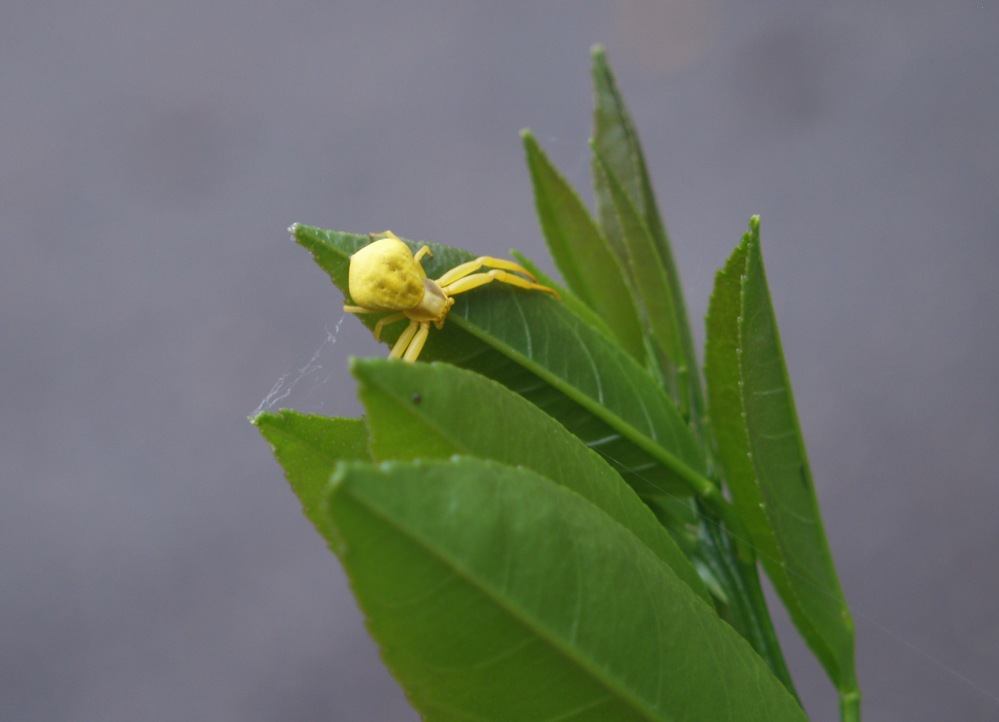
Most recently I noticed a small yellow spider on a small citrus tree that spends its summers outdoors. There are many dozens of various spiders in the garden, and though it is a bit of a nuisance to walk through a web at every turn, I have no desire to eliminate them. The Goldenrod crab spider (above) does not capture its prey in a web, but as I observed over several days, it stays quite still at the tip of the branch until some unfortunate soul wanders (or flies) near. For several days the spider didn’t move a fraction of an inch, and then I looked to see that it had captured a small bumblebee. Certainly, I do my best to protect the bumblebees, but I don’t wish to rid the garden of the bee or the spider. I’m comfortable in suffering through a bit of damage, and perhaps even an occasional lost plant so that all the various beasts can make this garden their home.
After traveling for a few weeks in the summer i came home to a bad infestation of bagworms on a particularly nice blue spruce bush. The majority of the needles were destroyed. After removing all the bag worm cocoons, what is left is a sad looking sight – however the buds on the bush appear to be okay. Is there any chance this spruce bush can rebound, or is it best to replace it now?
It is unlikely that the one time loss of needles will kill the spruce. Bagworms will not have effected next year’s growth buds, but the interior branches will remain bare and it will take a couple years for the spruce to fill in.